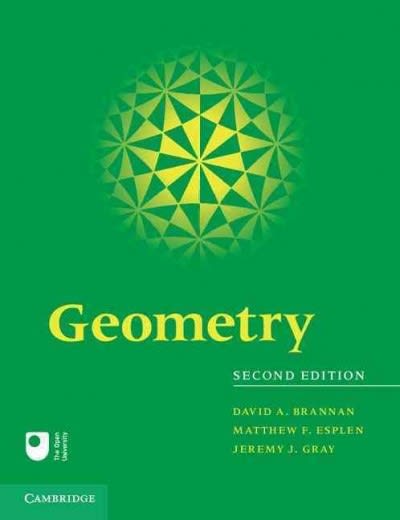Question
9. Which ones of the following are true (a) V (X ) = V (X ) (b) V (X ) = V (X ) (c)
9. Which ones of the following are true (a) V (X ) = V (X ) (b) V (X ) = V (X ) (c) E(X ) = E(X ) (d) E(X ) = E(X ) (e) V (3X +5) = 3V (X )+5 (f) V (3X +5) = 9V (X ) (g) V (3X +5) = 9V (X )+5 (h) E(4X +9) = 4E(X )+9
(i) E(4X +9) = EV (X ) (j) E(4X +9) = 16E(X ) (k) V (2X 4Y +5) = 2V (X )46V (Y )+5 (l) V (2X 4Y +5) = 4V (X )+16V (Y )+5 (m) V (2X 4Y +5) = 4V (X )16V (Y )+5 (n) V (2X 4Y +5) = 4V (X )+16V (Y ) (o) V (2X 4Y +5) = 2V (X )46V (Y )+5 (p) V (2X 4Y +5) = 4V (X )+16V (Y )+5 (q) V (2X 4Y +5) = 4V (X )16V (Y )+5 (r) V (2X 4Y +5) = 4V (X )+16V (Y ) Note: What is the general result?
10. E( X ) = and SD( X ) = n tells us that (a) as n V ( X ) 0 implying that the variation in the observed values of the random variable X decreases as the sample size increases. (b) the distribution of X is always centered around (c) Both (a) and (b) (d) None of (a) or (b)
11. In a Normal QQ Plot (a) We plot the sample quantiles against the quantiles of an arbitrary normal distribution. (b) We plot the sample quantiles against the quantiles of a T distribution with n-1 degrees of freedom. (c) We plot the sample quantiles against the quantiles of a standard normal distribution. (d) We plot the quantiles of a T distribution against the quantiles of a standard normal distribution. (e) None of the above.
12. If Xi are i.i.d N(,) then the distribution of X s/n follows a (a) N(0,1) (b) N(,) (c) T distribution with 2 degrees of freedom (d) T distribution with n 1 degrees of freedom (e) None of the above
13. If the degrees of freedom a tdistribution tends to infinity then the tdistribution behaves like (a) A standard Normal distribution (b) A tdistribution with one degrees of freedom (c) A Binomial distribution (d) An arbitrary normal distribution whose mean and variance are determined from the sample mean and sample variance. (e) None of the above.
14. When the degrees of freedom of a tdistribution is arbitrary large then P(T >1)= (a) 0.25 (b) 0.174 (c) P(Z >1) where Z N(0,1) (d) 0.1816 (e) None of the above.
Step by Step Solution
There are 3 Steps involved in it
Step: 1

Get Instant Access to Expert-Tailored Solutions
See step-by-step solutions with expert insights and AI powered tools for academic success
Step: 2

Step: 3

Ace Your Homework with AI
Get the answers you need in no time with our AI-driven, step-by-step assistance
Get Started


